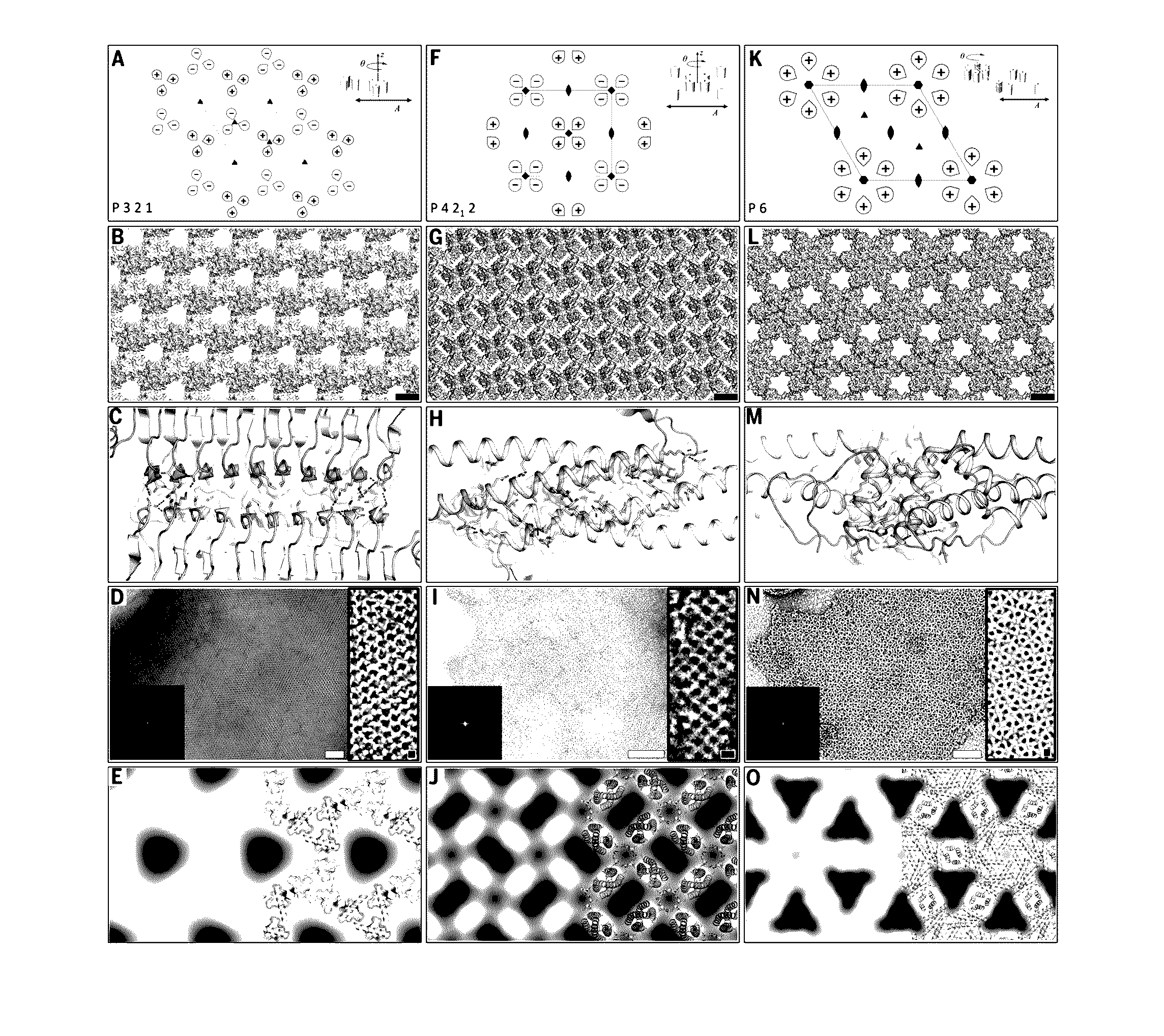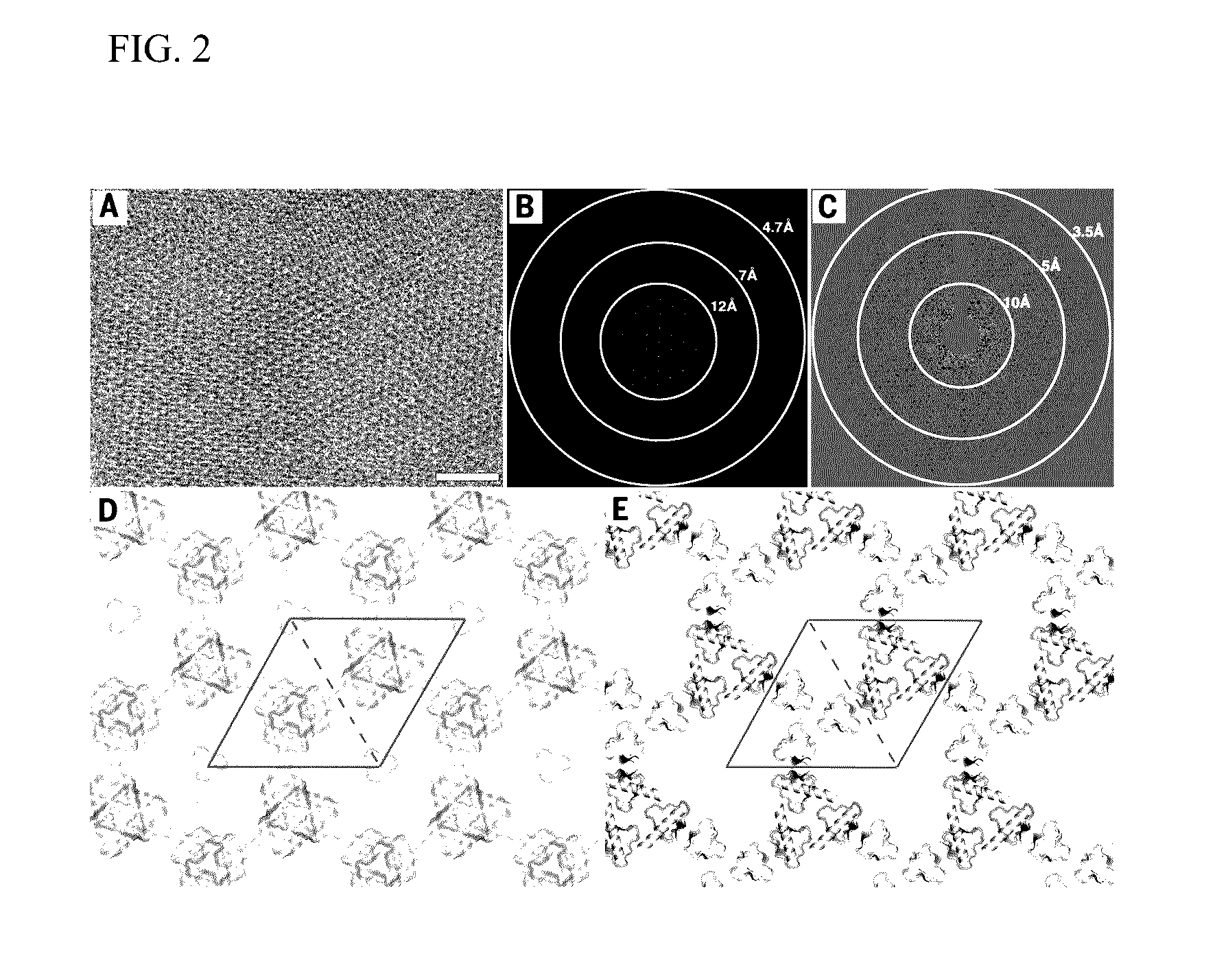Self-assembling two-dimensional protein arrays
- Summary
- Abstract
- Description
- Claims
- Application Information
AI Technical Summary
Benefits of technology
Problems solved by technology
Method used
Image
Examples
example 1
Design of Ordered Two-Dimensional Arrays Mediated by Noncovalent Protein-Protein Interfaces
[0061]Ordered two-dimensional arrays mediated by designed protein-protein interfaces stabilized by extensive non-covalent interactions were designed. Symmetric arrays were focused on as symmetry reduces the number of distinct protein interfaces required to stabilize the lattice. There are seventeen distinct ways (layer groups) in which three-dimensional objects can come together to form periodic two-dimensional layers (Nannenga et al., “Overview of electron crystallography of membrane proteins: crystallization and screening strategies using negative stain electron microscopy.” Coligan et al. (Eds.) Current Protocols in Protein Science Chapter 17, Unit 17 15 (2013)). In some layer groups there are only two unique interfaces between identical subunits, in others, three or four. Layer groups involving only two unique interfaces, and building blocks with internal point symmetry (which already cont...
example 2
Atomic Patterning of Proteins and Fluorescent Dyes Using Designed Two-Dimensional Protein Arrays
[0095]Proteins of interest were genetically fused to the N- or C-terminus of each of the array monomers using small linkers made of Glycine-Serine and Glycine-Glycine repeats (6-8 amino acid residues total), whereby the designed residues will drive self-assembly of both proteins (FIG. 8B). Based on the results obtained in the original study, design p4Z-9 had the smallest unit cell size (˜5 nm repeats) and was made up of very small proteins (˜12 kDa) and design p6-9H was shown to be both slow to form an array in vivo and highly soluble in vitro unless concentrated to a very high concentration. p3Z-42 is made up of large building blocks (˜25 kDa) and was shown to assemble into arrays at a very fast rate, both by in vivo and in vitro expression and would be well suited for fusion arrays.
[0096]Synthetic genes of each fusion were obtained and protein was expressed in Escherichia coli cells usi...
PUM
| Property | Measurement | Unit |
|---|---|---|
| Length | aaaaa | aaaaa |
| Length | aaaaa | aaaaa |
| Length | aaaaa | aaaaa |
Abstract
Description
Claims
Application Information
 Login to View More
Login to View More - Generate Ideas
- Intellectual Property
- Life Sciences
- Materials
- Tech Scout
- Unparalleled Data Quality
- Higher Quality Content
- 60% Fewer Hallucinations
Browse by: Latest US Patents, China's latest patents, Technical Efficacy Thesaurus, Application Domain, Technology Topic, Popular Technical Reports.
© 2025 PatSnap. All rights reserved.Legal|Privacy policy|Modern Slavery Act Transparency Statement|Sitemap|About US| Contact US: help@patsnap.com



